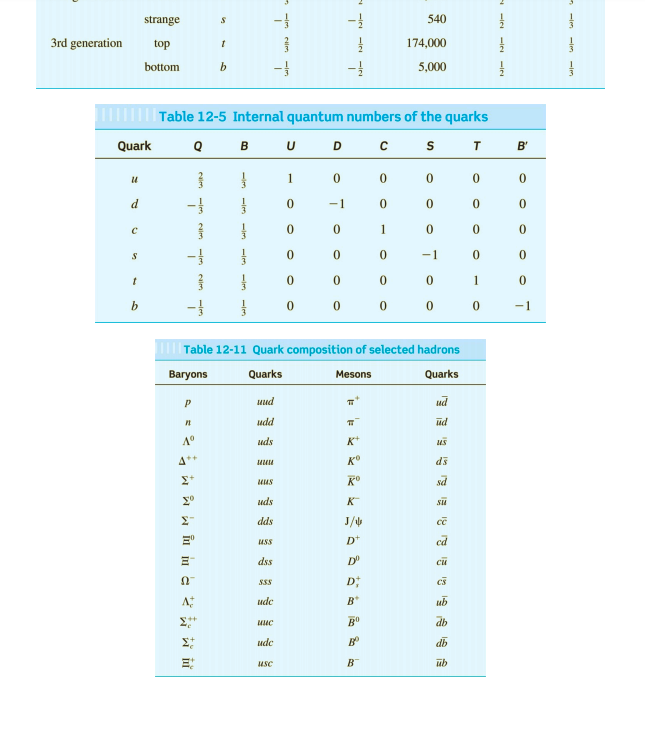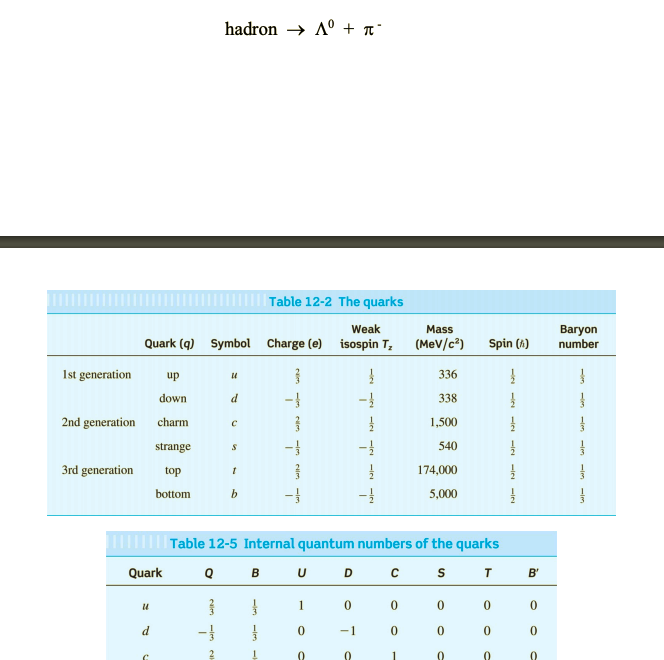- For this problem, you may use your notes and the tables provided only.
a. For the given quark combination (s,s,d) determine the baryon number, the strangeness, and the electric charge quantum number, Q’. Recall, a particle’s charge q is related to its electric charge quantum number Q’ by q = eQ’. You may use the tables provided only.
b. Using the tables provided, identify the hadron that corresponds to the above data. Estimate the expected mass of the hadron.
c. Determine the hypercharge, the z-component of the isospin, and the isospin for the hadron given in your answer to part b) above
d. If the normal decay mode of this particle is the one given below, identify which one of the four fundamental interactions is most likely responsible for the equation listed below. Justify your answer.


Trending nowThis is a popular solution!
Step by stepSolved in 2 steps with 3 images

- please answer c and darrow_forwardQ2 Draw a Feynman diagram for each of the reactions below. Clearly indicate all gauge bosons in your diagrams. (a) ve¯¯¯ + V₂ (b) y + y → µ³±µ˜¯arrow_forwardItemView?assignmentProblemID=150282761&offset3Dnext Homework 7 - Magnetic Field and Forces Exercise 27.21 A deuteron (the nucleus of an isotope of hydrogen) has a mass of 3.34x10-27 kg and a charge of 1.60×10-19 C. The deuteron travels in a circular path with a radius of 7.50 mm in a magnetic field with a magnitude of 2.20 T Part A Find the speed of the deuteron. να ΑΣφ m/s Submit Request Answer Part B Find the time required for it to make - of a revolution. t = Submit Request Answer a P Type here to searcharrow_forward
- D E and F pleasearrow_forwardA nucleus traveling at speed vnucleus = c(1 - 10-5) decays with the emission of a particle of speed vdecay particle = c(1 - 2 x 10-4) at an angle of 45°, as shown in the diagram above. i) What is the velocity (speed and direction) of the decay particle on transforming to the stationary frame of reference of the nucleus. Clearly explain the quantities used in your evaluation, and show the directions and signs of quantities. Give the speed of the decay particle in the form c(1 - ?). ii) If the decay particle was an electron, what was its total energy in the rest frame of the nucleus? What was its total energy in the original frame shown in the above diagram?Give your answers in units of MeV.arrow_forwardA. Determine the missing particle in the box. Fully justify your choice based on all relevant conservation laws. Please explain in details for question A and B.arrow_forward